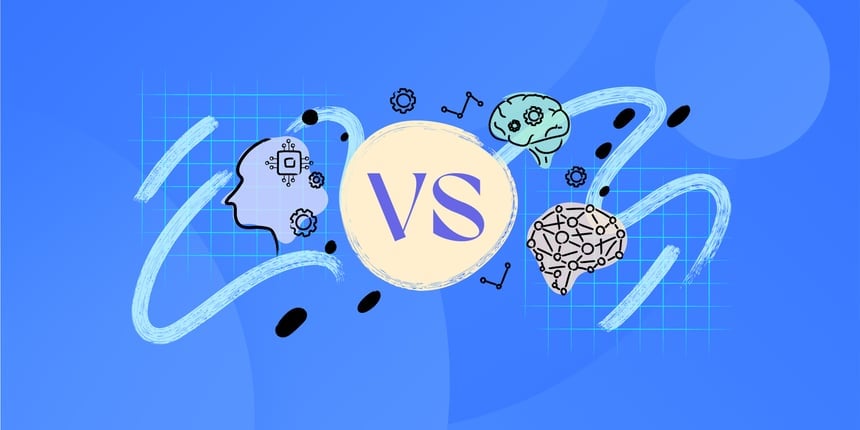In the world of networking, the word "node" is fundamental, yet it can often be misunderstood. Whether you’re setting up a simple home network or managing a complex enterprise IT infrastructure, understanding what a node is, its role, and how it functions is essential.
Nodes are the building blocks of any network, allowing devices to communicate, share resources, and operate efficiently.
As networks evolve, so does the concept of a node. Today, nodes can be anything from computers and smartphones to servers, routers, and IoT devices. Each of these nodes plays a crucial role in the overall functionality and performance of a network.
In this article, we’ll dive into what exactly a node is in the context of Network Management, explore its various functions, and look at the different types of nodes. We’ll also discuss the characteristics that define a network node, provide examples, and answer some frequently asked questions.
Keep reading to learn everything you need to know about nodes in networking!
What is a node?
A node in general terms refers to any point of connection or communication within a network. In networking, a node specifically refers to any device that connects to the network and can send, receive, or forward information. This could include computers, servers, printers, switches, routers, or even mobile devices.
Network nodes are critical elements that enable the flow of data across the network. Each node communicates with other nodes, making it possible for information to transfer from one device to another within the network. Whether it’s a simple file transfer between two computers or complex data exchanges between multiple servers, nodes drive these processes.
The evolution of nodes
Network nodes have evolved significantly from their early days. Initially, nodes were simple devices like basic computers and printers. Over time, technology introduced more complex and multifunctional devices, such as routers and smart sensors. This evolution reflects the growing demands and capabilities of modern networks.
Today’s network nodes are more advanced, integrating with cloud services, artificial intelligence, and other emerging technologies. This progression allows nodes to perform more complex tasks, manage larger volumes of data, and interact with a broader range of devices.
What does a node do?
A network node performs several key functions that ensure the smooth operation of a network. These functions include:
1. Data transmission
Nodes transmit data across the network. Whether sending an email, streaming a video, or accessing a website, the node plays a critical role in ensuring the data reaches its intended destination.
2. Data reception
Just as nodes send data, they also receive it. A node that receives data processes the information and either acts on it or passes it along to another node.
3. Data forwarding
In more complex networks, certain nodes (like routers) forward data to the correct destination. This process ensures that information routes efficiently through the network.
4. Resource sharing
Nodes share resources such as files, printers, and internet connections. This sharing capability is one of the main reasons networks are so powerful and useful.

Types of network nodes
Network nodes come in various forms, each serving a different purpose within the network. Here’s an overview of the main types of nodes:
1. End nodes
These devices, like computers, smartphones, or tablets, serve as the endpoints in a network. End nodes initiate or terminate communication and are often the primary users of network resources.

2. Intermediate nodes
These include devices like routers and switches that help direct data to the correct destination. They don't originate or terminate data but instead pass it along to where it needs to go.
3. Server nodes
Servers act as centralized nodes that provide resources, services, or data to other nodes in the network. They are crucial for hosting websites, managing email, and storing large amounts of data.
4. IoT nodes
With the rise of the Internet of Things (IoT), nodes now also include various smart devices such as sensors, cameras, and other connected gadgets that interact within the network.
Communication protocols
1. TCP/IP protocol
The Transmission Control Protocol (TCP) and Internet Protocol (IP) are fundamental for network node communication. TCP ensures reliable data transfer, while IP handles addressing and routing. Together, they enable nodes to exchange data efficiently across the internet and local networks.
2. UDP protocol
User Datagram Protocol (UDP) offers a simpler, faster alternative to TCP. It’s used for applications where speed is crucial, and occasional data loss is acceptable. Examples include video streaming and online gaming, where latency is minimized.
3. Other protocols
Various other protocols, like HTTP for web traffic and FTP for file transfers, facilitate specific types of communication between nodes. Each protocol serves a unique purpose, ensuring that data is transmitted and received according to the needs of the application.
Characteristics of nodes
Nodes have specific characteristics that define their role and functionality within a network:
1. Addressing
Every node in a network has a unique identifier, often in the form of an IP address, which distinguishes it from other nodes and allows it to be located within the network. This addressing enables nodes to communicate with each other accurately.
2. Connectivity
For a node to interact within a network, it must be connected either physically or wirelessly. This connection can be established through various networking technologies such as Ethernet cables, Wi-Fi, or other communication protocols.
3. Data processing
Depending on the type of node, it may have varying levels of processing power. For example, a server node typically has more processing power to handle complex tasks, while an end node like a smartphone may have limited processing capabilities.
4. Communication capabilities
Nodes must be capable of sending, receiving, and sometimes forwarding data. This communication is facilitated by protocols that ensure data transmits correctly and efficiently across the network.
5. Resource sharing
Many nodes, especially in a local network, involve sharing resources such as printers, files, or internet connections. This characteristic is fundamental to the collaborative nature of networks.
6. Security features
Nodes incorporate various security measures to protect data and maintain the integrity of communications. These features include encryption, authentication, and firewall settings to prevent unauthorized access and ensure secure interactions within the network.

4 examples of network nodes
To better understand network nodes, here are four examples illustrating their roles:
1. Computer
In a home network, your computer is an end node that connects to other devices and the internet, allowing you to browse, send emails, and access resources.
2. Router
In both home and enterprise networks, a router acts as an intermediate node that directs data between devices and the broader internet.
3. Server
In an enterprise setting, a server is a node that hosts applications, files, and other resources that other nodes in the network can access.
4. IoT device
A smart thermostat in a home automation system is a node that communicates with other smart devices and possibly the cloud to manage your home environment.
Future trends
1. AI and automation
Artificial intelligence (AI) and automation are shaping the future of nodes. AI-driven tools can predict and resolve issues proactively, while automation streamlines network management tasks, reducing the need for manual intervention.

2. Edge computing
Edge computing involves processing data closer to where it is generated, at the network edge, rather than relying solely on centralized data centers. This trend enhances performance and reduces latency, making it crucial for applications requiring real-time data processing.
3. Enhanced security features
Future nodes will likely integrate advanced security features, such as self-healing capabilities and more sophisticated encryption methods. These enhancements will help protect against evolving cyber threats and ensure robust network security.
Final thoughts
Understanding what a node is in networking is fundamental to grasping how networks function. Nodes are essential building blocks that enable communication, data sharing, and resource management within a network. Whether dealing with a simple home setup or a complex enterprise environment, the concepts surrounding nodes are critical to ensuring smooth operations and reliable performance.
From end nodes to intermediate and server nodes, each type has its own unique role and characteristics that contribute to the network's overall functionality. By effectively managing these nodes, particularly with tools like InvGate Asset Management, organizations can ensure that their networks remain secure, efficient, and capable of supporting their growing IT needs.
Frequently Asked Questions (FAQs)
1. What is the difference between a node and a host in networking?
A host is a specific type of node that typically refers to an endpoint device on a network, such as a computer or server. While all hosts are nodes, not all nodes are hosts, as nodes can also include intermediary devices like routers.
2. Can a smartphone be considered a network node?
Yes, a smartphone is a network node when it connects to a network to send, receive, or forward data.
3. How do nodes contribute to network security?
Nodes contribute to network security by following security protocols, such as encryption and authentication, to protect data as it travels through the network. Properly managing and securing nodes is essential to preventing unauthorized access and data breaches.
4. Why is node management important in large networks?
Node management is crucial in large networks to maintain performance, security, and reliability. Without effective node management, networks can become vulnerable to failures, inefficiencies, and security threats.















